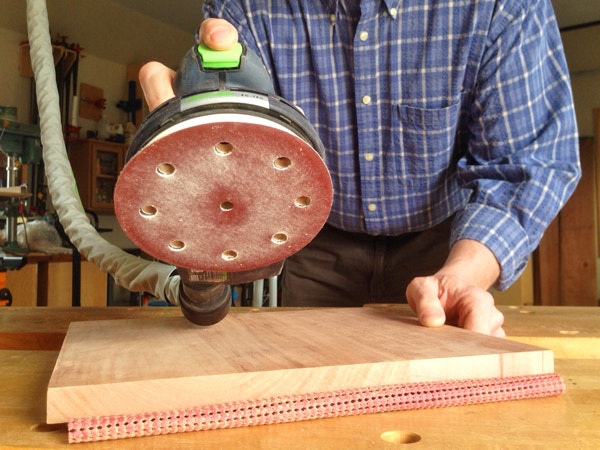How Do You Use a Random Orbit Sander?
I recently purchased a random orbit sander. The operating instructions mostly described how to maintain the machine and how to apply and remove sanding disks. Unfortunately, there was no instruction or recommendation as to how to actually use the machine. Over the past few years, I’ve read articles about random orbit sanders in Australian, U.S. and U.K. publications. Funnily, there were a variety of explanations on how to start and apply the machine to the timber. One said to start the machine and lower it gently to the surface to be sanded; then another said to place the stationary machine on the surface, start it and proceed to sand. I used the former recommendation as it seemed totally logical and the result I obtained seemed great to me, but I am wondering whether that is actually the right method? - Ian Butler
Chris Marshall: I use the same method you do, Ian: I start the random orbit sander with it elevated, let it come up to speed and then set it down on the wood. I'd be concerned about leaving deeper scratches if I started the sander with it resting on the wood instead – especially on softer woods like pine or with a new sanding disc installed. I also don't want the sander to jump around in my palm when it jolts to life and grabs the wood.
(I use the same method when operating oscillating and belt sanders, too.)
When I'm done sanding, I reverse the process: lift the sander off the wood with it still running and turn it off. I don't set it down until it stops running.
Tim Inman: This isn't that difficult. The manual for sanders should simply be: adhere appropriate abrasive disc, turn on machine, apply to wood surface and sand until satisfied. Finer abrasives give smoother results.
Other methods will work, too. Use the method that works best for you. Starting the sander while standing on wood will make an unwanted sanding mark, but it will also sand out with very little effort.
Keep the inspiration coming!
Subscribe to our newsletter for more woodworking tips and tricks





